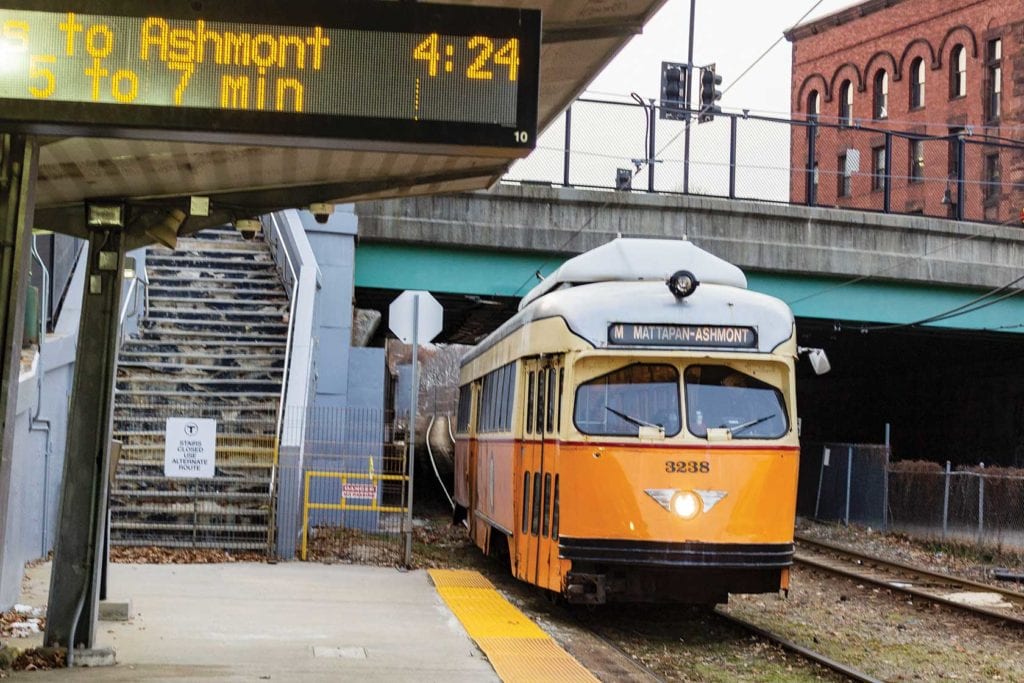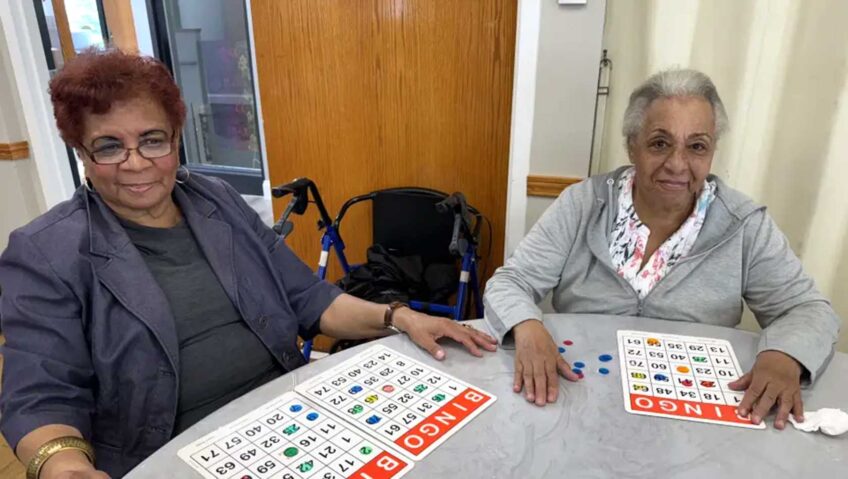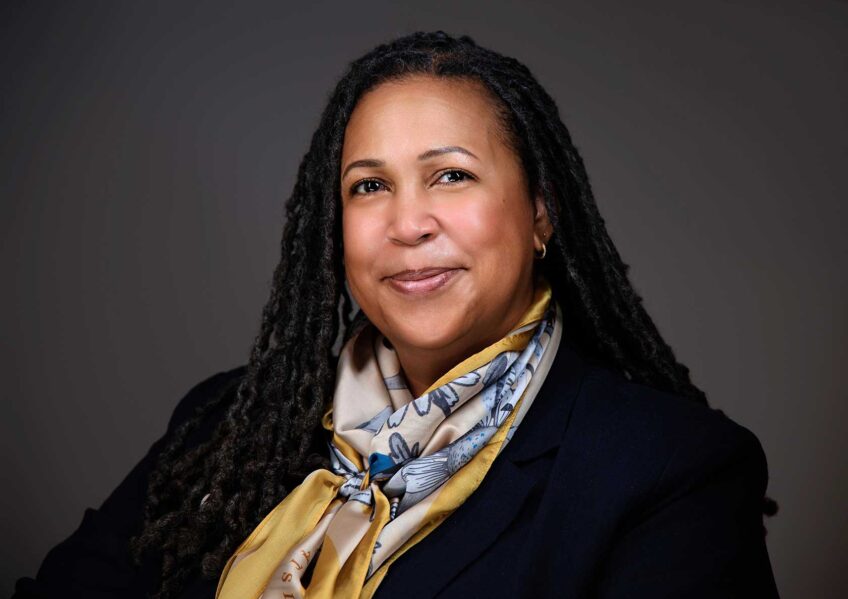MBTA planning to upgrade Mattapan trolley line
Fleet of aging trolleys would be swapped out for Green Line cars

The 75-year-old trolleys on the MBTA Mattapan Line will most likely be replaced with newer light rail vehicles like those on the Green Line, according to an MBTA study released last week.
The Mattapan Line’s Presidential Conference Committee cars were built in the 1940s and are still used on the line, which connects the Red Line at Ashmont to Dorchester, Milton and Mattapan. While the cars still run, their age means that repairs to the trolleys are difficult because their parts are no longer manufactured.
“I will always love the history and character of the PCC cars but as we plan for the future, MBTA customers deserve a line that is safe, is accessible to all, and is reliable in all weather conditions,” said Rep. Dan Cullinane, who represents part of the area where the line runs. “So if the current PCC cars cannot meet those standards, then it may be time for a newer fleet of trolley vehicles that can.”
In a presentation to the T’s Fiscal Management Control Board on Jan. 28, MBTA Chief Engineer Erik Stoothoff explained that the MBTA has looked at six different options for the Mattapan vehicles, including making heavy repairs to the current trolleys to keep them running, purchasing new replica PCC trolleys, repurposing existing Green Line “Type 9” Light Rail Vehicles (LRVs) or procuring new similar ones, and paving over the line to make way for buses.
However, Stoothoff showed in his presentation that the preferred choice would be using the Type 9 LRVs from the Green Line, the first of which was deployed on the D Line in January. Unlike the PCC cars, the Type 9 cars are Americans with Disabilities Act- and safety-compliant, and much more reliable.
“As we go through the Green Line transformation … the Type 9s that we’re just starting to put into service today will still be very young at 10 years old come time for that transformation,” Stoothoff said. “Repurposing the Type 9 vehicles is a very real option for us on the Mattapan High-Speed Line.”
He also noted that using the Type 9 LRVs would give the Mattapan Line a fleet of up to 24 cars, compared to its current 10 cars.
While purchasing newer vehicles for the Mattapan Line would solve a lot of issues, it would be much more expensive, as they would have to be custom-made to fit the MBTA specifications, and it would be difficult to find a manufacturer willing to do so for a small run of cars.
Stoothoff rejected the idea of replica trolleys, as there are no existing PCC replicas currently being manufactured, and many of the maintenance and accessibility issues with the historic cars would still exist.
On the other hand, buses have been rejected by many members of the community in a series of public meetings in 2017. Replacing the track with a bus fleet would also be more expensive, and would result in mass service disruption as the construction was completed.
MassDOT Secretary and CEO Stephanie Pollack was not so quick to dismiss the idea of buses on the line, as they are more reliable in winter weather than the trolleys that require an overhead catenary wire system for power.
“I understand that buses are not popular with the community, but with buses there’s no overhead catenary, and that’s a resiliency issue,” Pollack said.
The original cars will continue to run for the next eight to 10 years, as the MBTA has invested $7.9 million into a project for their refurbishment, including major repairs on propulsion and other systems. This refurbishment is expected to be completed in 2020.
Other needed upgrades to the line include bridge rehabilitation, track maintenance, power system upgrades, signal installations at two road crossings and accessibility improvements at all eight stations. Estimated costs for these upgrades range from $90 million to $115 million.
There will be a series of public meetings on the decision before a final vote is taken on the trolley replacements later this year.
Fare hikes
The Mattapan Line news comes as the MBTA has proposed a fare increase of 6.3 percent effective July 1, the first increase since 2016.
Under the proposal, CharlieCard fares for buses would go from $1.70 to $1.80, and subway fares would increase from $2.25 to $2.40. Monthly LinkPasses would increase to $90, a $5.50 hike.
This would be the last fare increase before the T introduces its new fare technology that would allow riders to pay by smartphone, expected in 2021. Laurel Paget-Seekins, director of fare policy, said that with the new technology, the T is considering a new fare system that may change the cost of a ride based on time of day.
MBTA General Manager Steven Poftak said that the increase would allow the MBTA to fund wage increases, make customer-facing capital improvements and increase service.
While the 2016 fare increase was similarly used to fund other projects, Monica Tibbits-Nutt, vice-chair of the board, said she wanted to be sure that customers were seeing the benefits, especially low-income riders whose lives will be more impacted by the increase.
“While this increase does not seem big to a lot of people, for a good number of our riders, it is a pretty big difference,” Tibbits-Nutt said. “What we hear from a lot of them is that their commute has not improved in the last three years since the last fare increase.”






